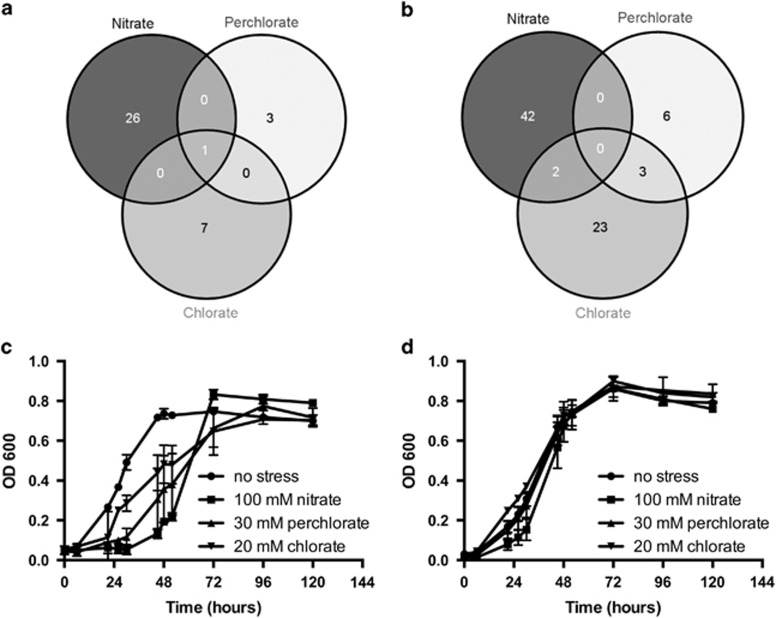Figure 2.
Comparison of important and detrimental genes for growth in the presence of nitrate or (per)chlorate. Genes were designated as important for resisting a stress if mutants in those genes resulted in a twofold reduction in abundance after growth in that stress relative to their abundance after growth in plain media. Conversely, genes were designated as detrimental to resisting a stress if mutants were twofold enriched relative to their abundance in plain media (Materials and methods). The complete data set is presented in Supplementary Dataset S1 and summarized in Supplementary Table S2. Only one gene, dde_2702 (rex), was observed as a common detrimental gene (beneficial mutation) between nitrate and (per)chlorate. (a) Detrimental genes (b) Important genes. Growth curves for (c) wild-type Desulfovibrio alaskensis G20 and (d) tn5::rex transposon mutant strains in the absence and presence of 100 mM nitrate, 30 mM perchlorate and 20 mM chlorate.

